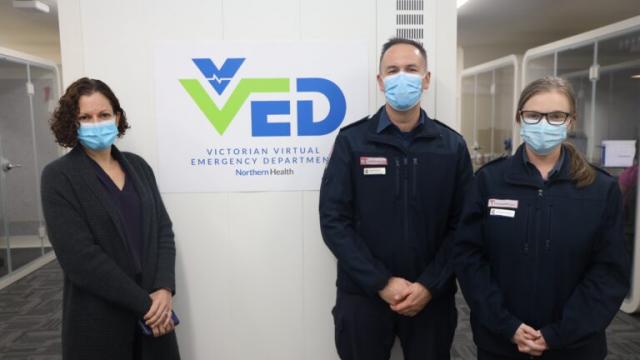The Victorian Virtual Emergency Department at Northern Hospital will be expanded to enable up to 500 patients per day to access the service.
The virtual emergency department was launched by Northern Health in October 2020, enabling patients to self-present to the hospital by using their phone or laptop.
Premier Daniel Andrews and Health Minister Mary-Anne Thomas visited Northern Hospital on Monday, July 18, to announce the expansion of the program as a part of a $162 million package to improve Ambulance Victoria’s operations.
Paramedics are able to connect suitable patients to the program, while on scene, for virtual assessment, management and referral.
The eligibility criteria for the VVED will also expand to people living in residential aged care facilities and everyone on the COVID-19 Positive Pathway Programs, the government said.
“Health care systems around the world are under pressure as we battle new variants alongside other respiratory illnesses – this package forms part of our plan to support our healthcare workers and get Victorians the care they deserve,” Mr Andrews.
“We’ll have more paramedics working alongside our nurses and doctors, to get more support to Victorians who can be treated in their home. Plus the tools to get patients the best care in the right place if they need to go to hospital.”
The virtual emergency department has supported more than 28,000 patients since it was launched and achieved an average ambulance and/or emergency department diversion rate of about 71 per cent of all patients seen, according to the government.
As part of the funding, a new rostering pattern for advanced life support paramedic crews will be trialled across four ambulance service areas in metropolitan Melbourne, delivering more flexible shift arrangements and optimising fleet availability.
Ambulance Victoria Offload teams will also be expanded to a total of 14 major public hospitals, including six existing sites, to enable timely patient offload and support ambulance availability, while a new, near real-time data dashboard to give paramedics and healthcare workers a better overview of system capacity to assist them make local decisions that help balance demand across the system.







